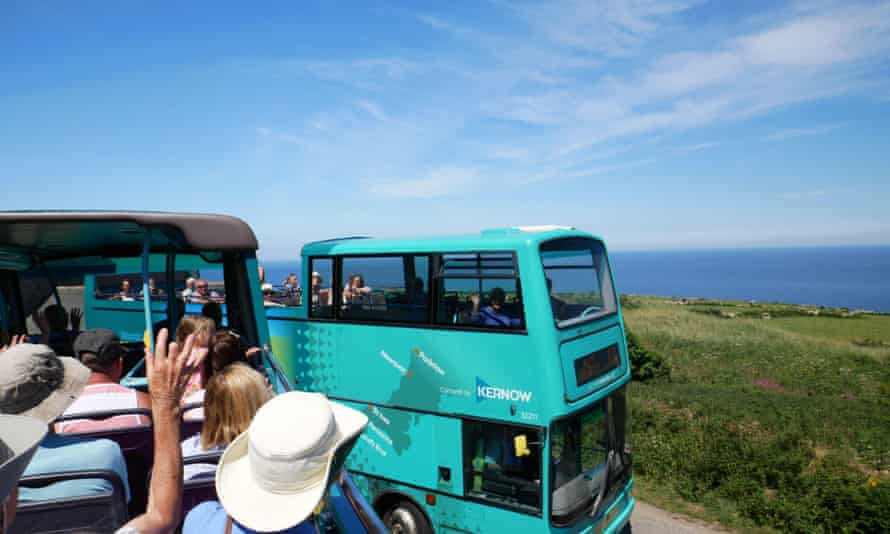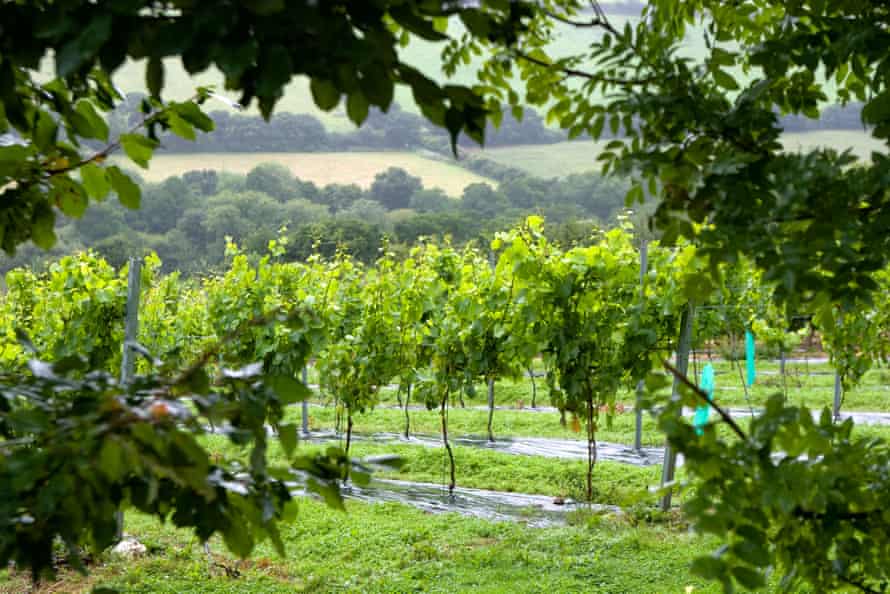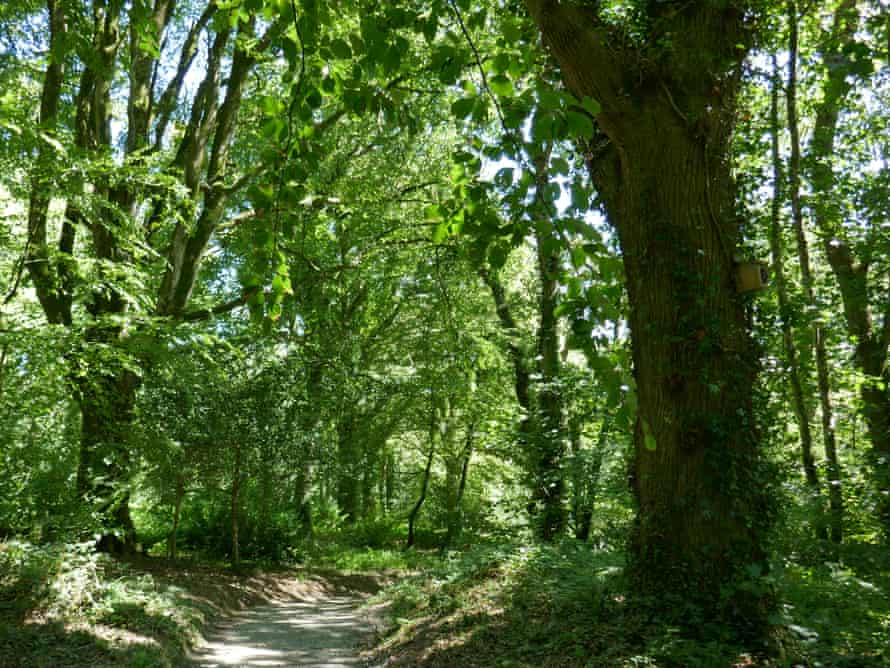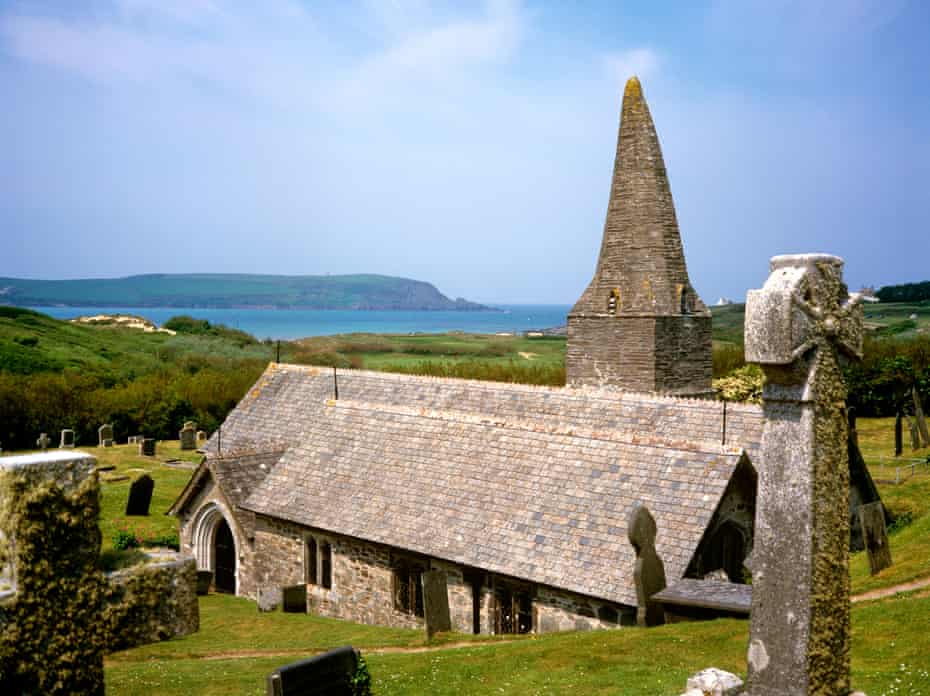A rocky island emerges from thick mist. Around it, cormorants are diving into grey-green waves, which are flowering with multicoloured jellyfish. The boat pitches wildly; the skipper warns us that tope, powerful sharks, are common in these waters and not to lose our rods. He throws most of our too-small early catches overboard, including a sunrise-pink gurnard.
I am mackerel fishing (£20pp, emmakate2.com) off the craggy Cornish coast with my husband’s family and we are hoping to barbecue fish this evening. My husband surprises the skipper by catching a sardine and suddenly, in flurries as we pass through deep shoals, we have landed enough mackerel for supper and are heading to shore with a bag of indigo-striped iridescent fish. After two hours at sea, stepping off the swaying boat into the crowds around Padstow harbour is like entering another universe.
Twenty minutes away on hourly bus 11A from Padstow’s hectic waterfront, Wadebridge is cheaper, less busy, and makes a good hub for car-free visitors. Our extended family is spending a week, as we have every summer for decades, in a holiday cottage walking distance from a bus stop. Eating barbecued fresh-caught mackerel together in the garden is a good start to this reunion after lonely months of lockdown.

We’re back in Padstow next day for an open-top bus ride past Bedruthan Steps. Devon and Cornwall have new or expanded holiday bus routes for 2021, including the tourist-friendly Daytripper (£10 a day) and this leisurely Atlantic Coaster service, which now goes all the way, via Newquay, to St Ives (£15 a day). It’s ideal for linear hikes along the coast path, over headlands patched gold and purple with gorse and summer heather, past towers and lighthouses, or above the long sands of Watergate Bay. Sitting by a drift of late sea pinks, we eat our sandwiches at the far end of Trevelgue Head, an ancient fort with bronze-age burial mounds, before catching the bus back from Porth beach.
This open-topper has been elusive. Sometimes it is replaced by a regular bus, and sometimes it’s caught in Cornwall’s nightmarish weekend traffic. But it is worth the wait. Up here on the top deck, we are high as the frondy tops of the tamarisk hedges and the swallows swooping over the barley. We can smell the wet hayfields and honeysuckle, feel the rain and roadside trees on our faces and see out of narrow sunken lanes to the endless sea.

If you walk the whole knee-wrecking 630 miles of the South West Coast Path, it is said to be equivalent (in terms of distance climbed) to four ascents of Everest. Slightly gentler, much shorter and less well-known is the 30-mile coast-to-coast Saints’ Way from Padstow to Fowey over wild St Breock Downs and the boggy slopes of stone-age Helman Tor.
We’ve walked the Saints’ Way in short stages over a few summers; my favourite sections include the opening four miles from Padstow’s grey-stoned church (peaceful even when the town is heaving) along marshy creeks and through the woods to flowery Little Petherick. Bus 11A stops on request, 15 minutes from Wadebridge, by Petherick’s stream-side Old Mill House bistro, which makes a great end to the walk. A changing menu, featuring, say, roast Cornish plaice with crispy capers and samphire (£16.95), holds its own against the area’s more famous foodie destinations.
The best way out of Wadebridge is by bike. The popular six-mile northward stretch of the Camel Trail is the UK’s most-cycled off-road route, a disused railway with unmatchable views across the blue-and-gold estuary. Summer morning bike hire here gets booked up weeks ahead, but several places now offer quieter afternoon rentals from 3pm and open at 8.30am for pre-booked early risers (Camel Trail Cycle Hire from £16/£8 adult/child a day, evenings £3 off).

Cycling towards Bodmin is less crowded. A canopy of oak and beech softens the showers or blazing sun and the Camel Valley vineyard, next to the trail, has a slate terrace above sloping vines, where you can sip a sparkling rosé (weekdays only, book ahead). In the lichened orchard of the Camel Trail tea gardens nearby, we sample more Camel Valley wines (from £5.25 a glass) and pricey Cornish crab sandwiches (£13.25) before crossing the river high on an old railway bridge. Soon afterwards, the granite walls of revamped Bodmin Jail (entry £15/£12.50) tower over the end of the trail.
From Bodmin Parkway station one afternoon, we stroll through a mossy arch and a fern-filled valley. Three generations of us follow the fast-rippling River Fowey and wander a couple of miles under redwoods and copper beeches for a cream tea at the National Trust’s Lanhydrock, where visitors arriving by train get 10% off in the Stables tearoom or shop (show your train ticket at the gatehouse for a voucher, £16/£8).
The formal gardens have views and banks of hydrangeas and, inside the house, there’s a 17th-century barrel-vaulted ceiling covered in plaster beasts and bible stories. Deep in Lanhydrock’s woods, the only sounds are birds and flowing water, and an occasional whistle from the nearby Bodmin and Wenford steam railway (all-day tickets £17/£9).

Back in Wadebridge, we explore the time-warped shops: butchers, bakers and Granny Wobbly’s Pantry, selling crumbly slabs of fudge cooked in a stove-top saucepan so the smell of melting sugar drifts into the bunting-strung streets (giftboxes £12.99). Central self-catering stays include Edwardian Brookdale House, four minutes’ walk from the bus stop, with three bedrooms and lavender by the path (from £500 a week, short breaks from £100 a night).
Volunteer-run Wadebridge Museum (free) is one room, packed with intriguing things like a creepy collection of death masks from a local hardware store. Steward Andrew Keen can remember the poet John Betjeman strolling around town, and the last 1950s coasters sailing up the silty River Camel to what was then an inland port. The old railway station features in Betjeman’s blank verse memoir Summoned by Bells: “On Wadebridge station what a breath of sea / scented the Camel Valley! Cornish air, soft Cornish rains, and silence after steam.”
There are no trains now to Wadebridge, but regular buses from Bodmin Parkway run through town. Bus 10 goes on to Rock, where we have booked (back in February) a celebratory lunch at fancy pub The Mariners. The kids have gourmet fish and chips (£19), I have passion fruit pavlova (£7) for pudding, sharp and vanilla-y, and we stroll out afterwards, over the sandy golf course, to see Betjeman’s grave by wonky-spired, dune-sunk Saint Enodoc’s church in Trebetherick. Heading around the seaward side of Brea Hill on to huge Daymer Bay, we catch the ferry (£3), straight off the beach at low tide, over to Padstow for a bus home.

Among the chief advantages of car-free holidays in Cornwall are the journeys there and back. Instead of traffic jams and miserable queues at Exeter motorway services, we have ringside views of spectacular landscapes: egret-haunted estuaries, the Tamar Bridge, soaring above boats and waterside houses, and the red cliffs of the Devon coast. Sit on the left heading west and the right heading east if you can. Herons are standing on an old wrecked boat, which rests by the mud-flanked River Plym like a whale skeleton; gold clouds are mirrored in the wet sands of the Teign estuary and the waves outside the train window near Dawlish shine in the setting sun.





